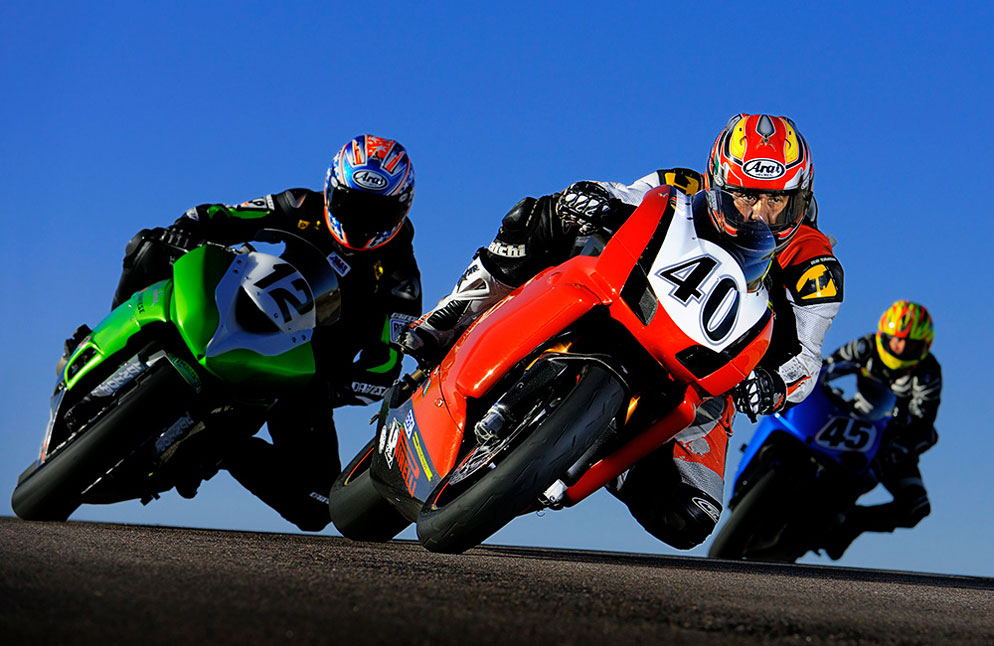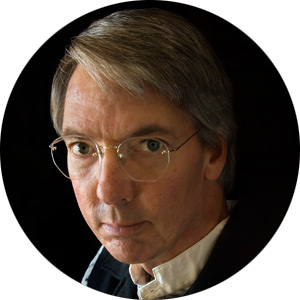Which Nikon Cameras Are Capable Of High Speed Sync


Avant-garde
Using Auto FP High-Speed Sync to Illuminate Fast Sports Action

Dave Black on using loftier-speed flash sync for sports action
Today's sports photographer not but needs to capture the activeness, but oftentimes produce a unique feature image for a client. Using Nikon Speedlights in the Auto FP High-Speed Sync fashion to illuminate fast activity is a great way to take your sports photography to the next level.
[Motorcar FP High-Speed Sync is a flash mode used for fill-flash photography under brightly lit conditions. It will fill in and open up upward shadowed areas in order to portray the greatest detail in subjects. It'south also ideal when using wide aperture lenses, and because it allows fast shutter speeds—upward to fastest shutter speeds on compatible Nikon D-SLRs—it is oftentimes used for action-stopping sports photography. And for portraits, you tin can open up upwardly your lenses to their full aperture in order to isolate your subject against a blurred background without overexposing the image.
When Auto FP High Speed Sync is selected, the flash will fire for the duration of the shutter mantle'south travel, thus syncing with the camera'southward shutter speed when that speed is fix higher than the camera's normal sync speed. —Editor]
Dave'south assistant holds a monopod with a Foursquare attached that houses 4 Nikon Speedlights. Triggered remotely, the Speedlights illuminate the kayaker on the water. Depending upon the situation, the Speedlights may also be housed inside a softbox. [Come across final image about stop of article —Editor]
Dave's assistant holds a monopod with a Square attached that houses 4 Nikon Speedlights. Triggered remotely, the Speedlights illuminate the kayaker on the water. Depending upon the state of affairs, the Speedlights may also exist housed within a softbox. [See final prototype nigh terminate of article —Editor]
Setting upwards your camera and Speedlights
When photographing sports action I will set each Speedlight to the REMOTE mode and adjust my Transmission Power Output setting via the Nikon SU-800 Commander. So I become into the Bracketing/Flash category in the custom setting menu of the camera and select the Auto FP ane/250 setting that activates the High-Speed Sync mode. This setting will enable you to shoot at a fast shutter speed—faster than the normal flash sync speed of 1/250, which is also slow to stop the action. (Note: cameras like the D800/D800E can use FP High-Speed Sync upwardly to 1/320 of a second shutter speed so that ane/250 of a second remains a normal sync mode without light/output loss that you would become with the FP sync.)
My Basic Lighting Formula
I can constitute the exposure manually using the in-camera meter, or when shooting in Programme mode with exposure bounty of -ane EV. I make an "underexposed" examination image, turn on my Speedlights and make the "reveal" epitome. You tin can meet this in the ii images of the Superbikes (photos 1 and 2).
How to determine the ability output:
Ready the manual power output of the Speedlights via the SU-800 Commander, outset at Total power, then take a examination shot and review it on the camera's LCD. If the subject is too bright, simply reduce the power output via the SU-800 Commander. It'southward a flake of trial and error, and then if FULL power is as well strong, endeavor ½ power and if that is yet besides bright try ¼ ability, etc. Continue to adjust your flash'southward power output and make test shots until your subject is illuminated to your liking.
If at Full power your field of study is too dark, so you will need to motility your Speedlight closer to the subject or add boosted Speedlights to increase the amount of illumination.
Basic lighting formula used to underexpose the scene and and then reveal the bailiwick with Speedlights:
This image was captured with a manual exposure of ISO 400, 1/1250 of a second shutter speed at f/8, which produced a -1.3 EV underexposed scene. I could accept prepare the photographic camera to aperture priority or shutter priority and set the exposure compensation to -1.3 EV instead of using manual exposure.
© Dave Blackness
Superbikes Underexposed – This prototype was captured with a manual exposure of ISO 400, ane/1250 of a second shutter speed at f/8, which produced a -i.3 EV underexposed scene. I could accept set the camera to discontinuity priority or shutter priority and set the exposure compensation to -1.3 EV instead of using manual exposure.
In this image, the aforementioned exposure of ISO 400, i/1250 of a 2nd shutter speed at f/8 was used, which produced an underexposure by -1.3 EV, but the subject field was illuminated using 4 SB-900 Speedlights placed off photographic camera, near xx feet to the left of the lead passenger. The light from the Speedlights hands illuminates the passenger.
© Dave Black
Superbikes Revealed – In this image, the same exposure of ISO 400, 1/1250 of a 2d shutter speed at f/viii was used, which produced an underexposure by -1.three EV, but the subject was illuminated using iv SB-900 Speedlights placed off camera, about xx feet to the left of the lead rider. The calorie-free from the Speedlights easily illuminates the rider.
This epitome, besides captured at 1/1250 of a second shutter speed follows the aforementioned basic formula simply information technology has an fifty-fifty more than dramatic appearance thanks to the -2.0 EV underexposure and illumination from four SB-900 Speedlights with a power output of only 1/8 power. With the setting sun, and decrease in ambient light, my Speedlights get more efficient and a much lower power output is needed.
© Dave Black
This paradigm, also captured at ane/1250 of a second shutter speed follows the same basic formula merely it has an even more dramatic advent thanks to the -2.0 EV underexposure and illumination from 4 SB-900 Speedlights with a power output of only 1/viii ability. With the setting dominicus, and decrease in ambient calorie-free, my Speedlights become more than efficient and a much lower power output is needed.
These images, like many other images I capture using Loftier-Speed Sync brand utilise of illumination from more than one Speedlight. Sports action in full general requires that photographers be positioned some distance from their subject field. Past using 2, three, or fifty-fifty four Speedlights from the same location I can illuminate subjects that are further away.
This paradigm of a White Water Kayaker was captured at one/2000 of a 2nd shutter speed and too makes use of High-Speed Sync. But it introduces a new chemical element to my Speedlight formula, the addition of a Warming Gel. I intentionally underexposed the scene, this time past -1.7 EV and revealed (illuminated) my subject from four SB-900 Speedlights, each with the CTO Warming Gel that comes with each flash unit.
© Dave Black
This image of a White Water Kayaker was captured at 1/2000 of a second shutter speed and also makes employ of High-Speed Sync. But it introduces a new element to my Speedlight formula, the addition of a Warming Gel. I intentionally underexposed the scene, this time by -1.7 EV and revealed (illuminated) my bailiwick from four SB-900 Speedlights, each with the CTO Warming Gel that comes with each flash unit of measurement.
The Moody Blue Formula: For this very stylized paradigm I changed the photographic camera's white balance from daylight (5500°G) to Incandescent (3030°One thousand) so the overall scene becomes a absurd bluish color. With the orange colored CTO Warming Gel placed over each SB-900, the color of light now illuminates my subject area dorsum to a slightly warmed daylight, with an nearly "golden hour" color.
For those of you who take never used a CTO get, it is simply a filter designed to change the color temperature (Kelvin) that is placed over the daylight-balaced Speedlight. In the instance of Orange CTO filters, it is for a warming effect or to match to Tungsten and/or Incandescent lighting.
Go on in mind that when y'all place the CTO Warming Gels on a Speedlight the amount of illumination hitting the field of study is reduced. To compensate, I increased the ability output of each Speedlight to effectively reveal (illuminate) my discipline from the underexposed scene.
This final image again illustrates the same basic sports action lighting formula. This fourth dimension I used a very fast shutter speed of ane/4000 of a 2nd, an underexposed scene of -ii.3 EV and the revealed (illuminated) my discipline using four SB-900 Speedlights, each set at FULL power. Annotation that I don't need to low-cal the unabridged discipline, I just demand to low-cal part of him, and then in this prototype, I've illuminated his face, arms, leg and a portion of the wheel. This is dramatic off camera lighting.
© Dave Black
This final image again illustrates the same basic sports activeness lighting formula. This time I used a very fast shutter speed of ane/4000 of a 2nd, an underexposed scene of -2.3 EV and the revealed (illuminated) my discipline using four SB-900 Speedlights, each set at FULL power. Note that I don't need to low-cal the entire bailiwick, I only need to lite function of him, and so in this image, I've illuminated his face, arms, leg and a portion of the bicycle. This is dramatic off camera lighting.
Mastering sports action lighting with Speedlights and High Speed Sync will require experimentation and practise, but I encourage you to strive to brand this very dynamic and stylized lighting technique part of your lighting skill set.


As a freelance photographer for over thirty years Dave's piece of work has primarily centered on the sports industry for such publications as Sports Illustrated, National Geographic, Fourth dimension, Newsweek, ESPN, Olympian Mag, Parade and The Wall Street Journal. The list of events he has covered includes the Masters, Kentucky Derby, NASCAR, National Football League, and 12 Olympic Games. Known for his creative apply of Speedlights and in particular with the artistic technique of Lightpainting, Dave'due south portfolio continues to broaden into the commercial and advertizing industry, Learn more nigh his work at www.daveblackphotography.com and view his ambassador folio.
More than articles by this contributor
This Article Goes Great With These Products
Source: https://www.nikonusa.com/en/learn-and-explore/a/tips-and-techniques/using-auto-fp-high-speed-sync-to-illuminate-fast-sports-action.html
Posted by: kennedymiltrared1985.blogspot.com


0 Response to "Which Nikon Cameras Are Capable Of High Speed Sync"
Post a Comment